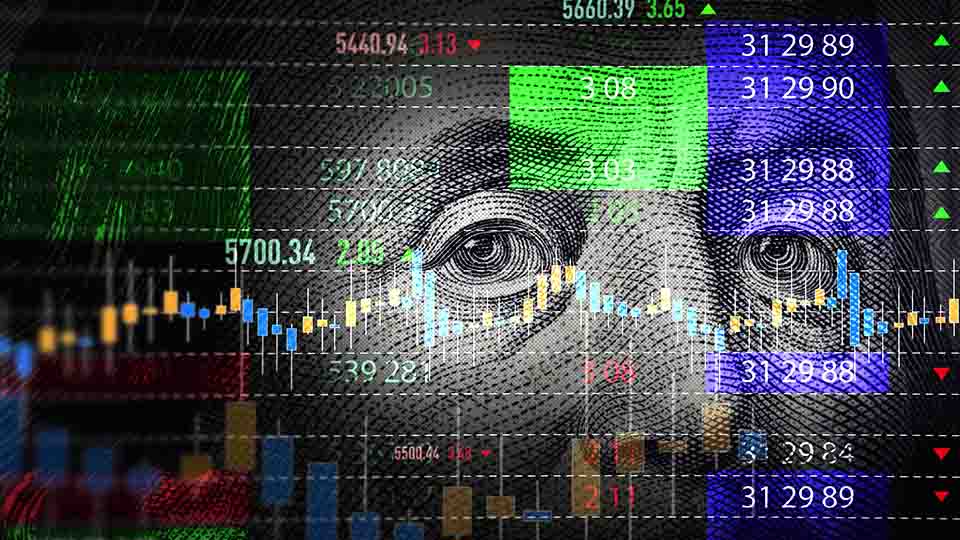The Risks to Goldilocks
29 April 2021
The way we think about the financial markets—since no one knows the future for sure—is to identify potential scenarios. Last year, we said that roaring global growth would push interest rates to 1.5%-2.0% during 2021. This already happened in the first quarter! Now what?
Scenario 1: Heading for a Goldilocks Markets
The mainstream, high-probability scenario—“Goldilocks1”—is that interest rate increases pause and stock markets continue to make new highs. To support this idea of strong-but-tapering growth, China—the first major country that went through the COVID-19 cycle—is now leveling off after its boom.
Following some temporary weakness in February, China’s March manufacturing Purchasing Managers’ Index (PMI)2 rose more than expected to 51.9 and the services PMI rose to 56.3 (in the pre-COVID range), only confirming, in our view, that the recovery is getting more balanced.
China Recovery Becomes More Balanced
Source: Bloomberg. Data as of 31/3/2021. Past performance is no guarantee of future results. Chart is for illustrative purposes only.
Scenario 2: Overheating and Rising Rates Fuel Longer-lasting Inflation
Another scenario is the “Wage Inflation” scenario. I like to distinguish between commodity price inflation and wage inflation. Commodity prices have been rallying strongly since last summer with almost all commodity prices at multi-year highs. But I believe wage inflation is more important for financial markets. Wage inflation is the driver of a longer-lasting inflation, can be hard to extinguish, and may hurt stock markets. Anyone remember the stagflation of the lost decade of the 1970’s?
The level of stimulus from the U.S. Federal Reserve we saw in 2020 was unprecedented, as is the spending planned by the new Biden administration. We may find that we are witnessing a paradigm change in the environment of the financial markets and a new dynamic compared with the last 10 years.
Fed Stimulus Fuels Inflation Expectations (5 Years Ahead)
Source: Bloomberg. Data as of February 2021. Past performance is not a guarantee of future results. Inflation expectations are measured here using a 5-year, zero coupon USD inflation swap. The swap is a derivative used to transfer inflation risk from one party to another through an exchange of cash flows. In a zero coupon inflation swap, only one payment is done at maturity where one party pays a fixed rate on a notional principal amount, while the other party pays a floating rate linked to an inflation index.
Again, the burst of commodity price inflation isn’t the concern in this Wage Inflation scenario. Rather, the concern is that investment consequences could endure not only through 2021, but also well into 2022. This, then, is the risk that wage inflation takes off, triggered by super-heated growth and rising rates. After all, the U.S. economy hasn’t seen GDP growth rates like this since the 1950s. My investment colleagues are divided on whether wage inflation is possible in an over-stimulated yet deflationary world. We’ll see in 2022.
Scenario 3: Be Ready for a Possible Rate Surprise
The final scenario remains that, with this tremendous stimulus, we will see interest rates rise unexpectedly further in the second half of 2021. In fact, I believe there is a chance that 10-year U.S. interest rates can exceed 2.5% by the end of 2021—“Rate Surprise”—and that investors should have this scenario on their radar screens. This could lead to turbulence in financial markets. By definition, bonds will fall further. A gradual, growth-driven rise in rates would be okay for equities, but a sharp spike may not be.
1 A Goldilocks economy is an economy that is not so hot that it causes inflation and not so cold that it causes a recession.
2 Purchasing managers index (PMI) is an economic indicator derived from monthly surveys of private sector companies. A reading above 50 indicates expansion, and a reading below 50 indicates contraction.
Important Disclosure
This is a marketing communication. Please refer to the prospectus of the UCITS and to the KID before making any final investment decisions.
This information originates from VanEck (Europe) GmbH, which has been appointed as distributor of VanEck products in Europe by the Management Company VanEck Asset Management B.V., incorporated under Dutch law and registered with the Dutch Authority for the Financial Markets (AFM). VanEck (Europe) GmbH with registered address at Kreuznacher Str. 30, 60486 Frankfurt, Germany, is a financial services provider regulated by the Federal Financial Supervisory Authority in Germany (BaFin).
The information is intended only to provide general and preliminary information to investors and shall not be construed as investment, legal or tax advice VanEck (Europe) GmbH, VanEck Switzerland AG, VanEck Securities UK Limited and their associated and affiliated companies (together “VanEck”) assume no liability with regards to any investment, divestment or retention decision taken by the investor on the basis of this information. The views and opinions expressed are those of the author(s) but not necessarily those of VanEck. Opinions are current as of the publication date and are subject to change with market conditions. Certain statements contained herein may constitute projections, forecasts and other forward-looking statements, which do not reflect actual results. Information provided by third party sources is believed to be reliable and have not been independently verified for accuracy or completeness and cannot be guaranteed. Brokerage or transaction fees may apply.
All performance information is based on historical data and does not predict future returns. Investing is subject to risk, including the possible loss of principal.
No part of this material may be reproduced in any form, or referred to in any other publication, without express written permission of VanEck.
© VanEck (Europe) GmbH / VanEck Asset Management B.V.
Sign-up for our ETF newsletter
Related Insights
Related Insights
13 December 2024
06 August 2024
01 May 2024
12 February 2024




